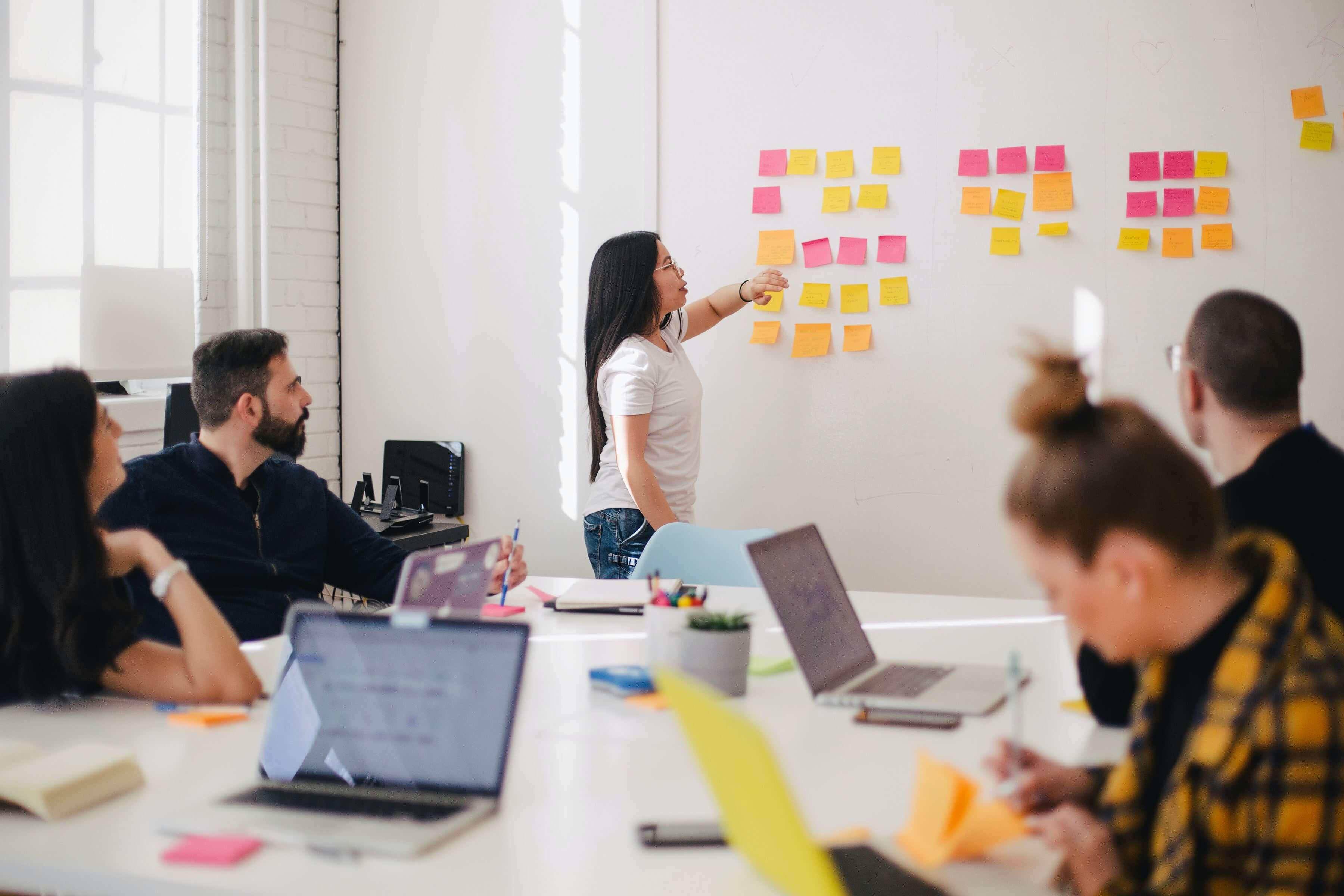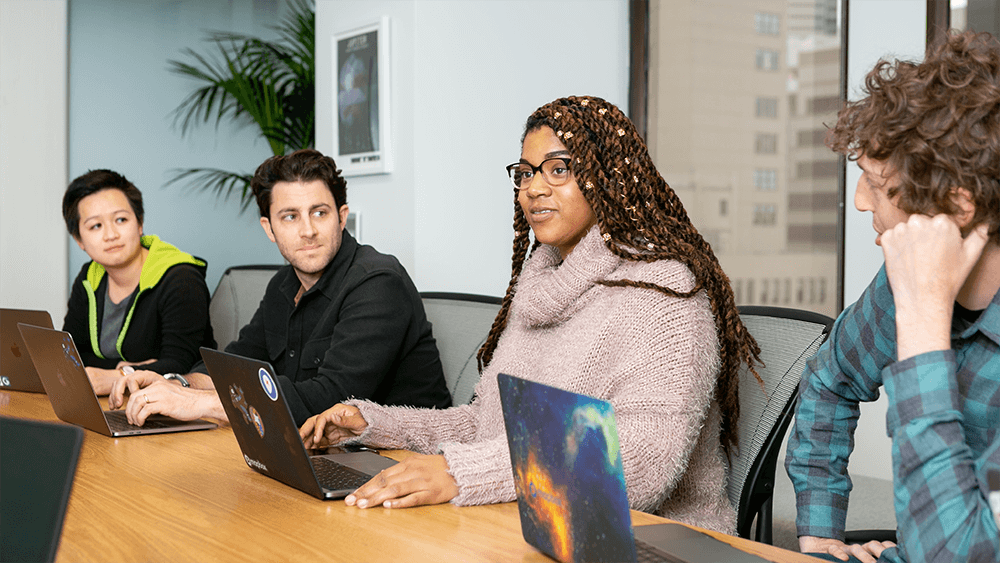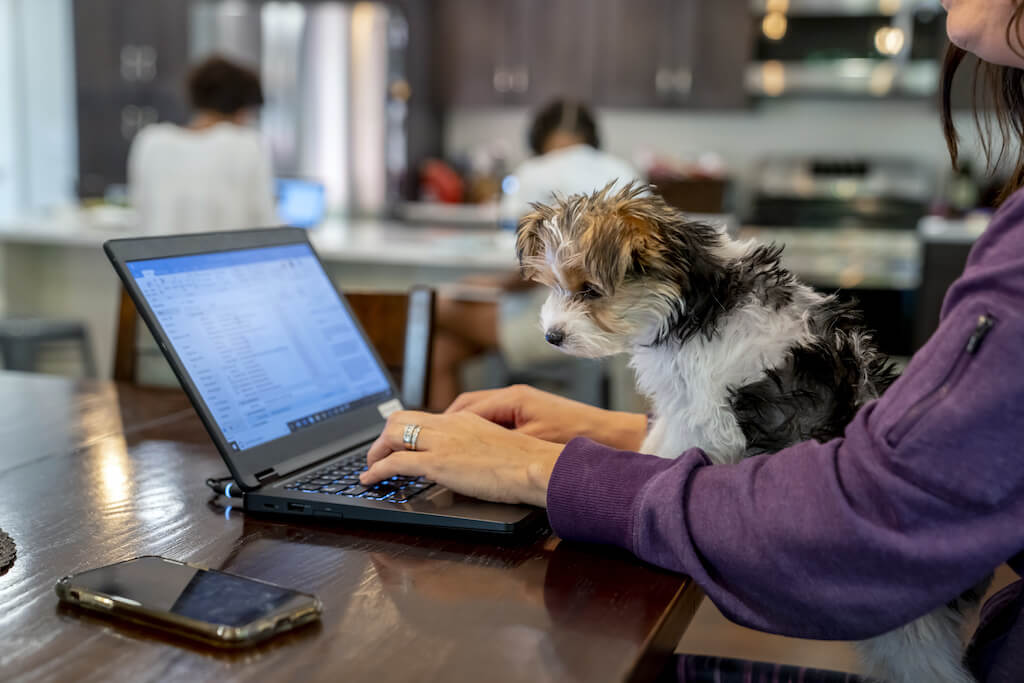There’s no “one size fits all” approach when you’re trying to make your company more inclusive. The challenges of diversity and inclusion go beyond just ticking boxes and fulfilling metrics.
So how do you work towards an organization that better reflects its customers through strategies that:
- Encourage psychological safety in the workplace
- Drive performance with positive leadership
There are things you can do at every level, whether you’re a senior manager or just starting out.
In this episode of Women Driving Impact, Emmy Negrin, Director of Diversity and Inclusion at Adidas, spoke to Kintone Marketing Director Nicole Jones about how she's driving inclusive company cultures while ensuring companies make services and products that reflect the community it serves. Their discussion included traits that great leaders possess, how being a queer woman impacts Emmy’s leadership style, and tips for advocating for marginalized groups.
Listen to this podcast episode here:
Emmy is a social entrepreneur focused on building purpose-driven and inclusive workplaces. In her current role, she's creating a diversity and inclusion strategy focused on company culture and equitable approaches to hiring.
Emmy previously led diversity and inclusion and social impact at OpenTable in San Francisco, and prior to that worked at Yahoo managing the Yahoo Employee Foundation, a global mindfulness program and social impact grant making connecting employees with nonprofits around the world. Emmy is also a leadership coach and wilderness guide for backpacking trips that teach people how to be agents of change and global citizens.
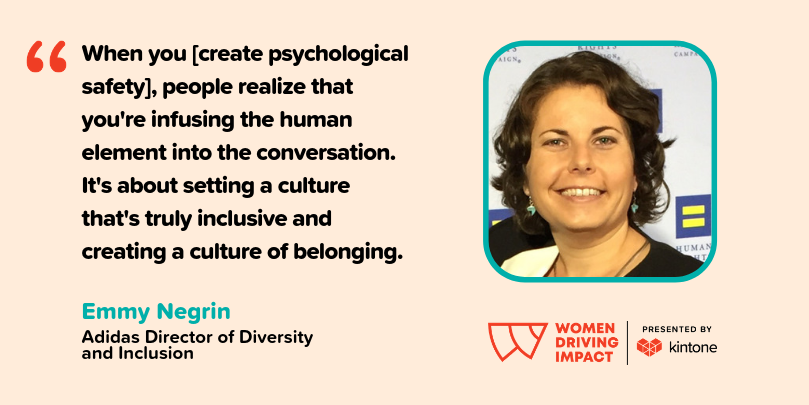
Tell us a little bit about your professional journey, personal growth, and how you got where you are today.
When I started my career, I thought I was going to be a psychologist. I eventually found that it wasn't career path I thought it was, so I ended up studying international development and social change and obtaining a broader communications degree.
I studied abroad in Namibia and South Africa in a program focused on reconciliation of apartheid. The project failed because I didn't understand the cultural context. After I moved back to the United States, I worked in youth leadership development, with a focus on learning and development, for a couple different organizations. It was then that I was invited to join Yahoo.
It was a fish out of water moment for me: what am I doing in this big tech company?
I was focused on trying to bring social change to the world...why would a tech company like Yahoo care about? The offer opened my eyes to how you can play a role in a big company and influence things like inclusive workplaces. I ended up leading the $10 million Yahoo Employee Foundation, which showed me how big corporations with ample money can by used to support great organizations all over the world.
After Yahoo, I focused on diversity and inclusion at OpenTable. Most recently, I just joined Adidas, where I also focus on diversity and inclusion in the workplace.
What do you think are some traits that great leaders possess?
It's a combination of authenticity, compassion, and a real confidence in setting the direction.
When you're leading a team, people are looking to you to to set the direction. So it’s important to have the confidence of knowing where you're going, but also the authenticity to recognize that you're really guiding people. Great leaders also lead with compassion. That is the "secret sauce" to leadership: recognizing that you're only as good as the sum of your parts.
How does being a woman impact your leadership style?
I actually identify as queer. I'm always aware that I am a queer woman. I'm often the only woman in the room. But I think many women naturally have the ability to connect with people in a very real way, and that can be a differentiator. If you're trying to pitch a new idea or a new initiative, the ability to connect with someone is a very female approach, a bit of a balanced approach to leading something.
It's an empowering thing when you start to recognize that you can use the natural, innate wisdom that women have and use that as a way to show up in a more authentic and real way.
What are some best practices for listening to and advocating for women or marginalized groups?
First, it's about creating psychological safety, creating places where people feel safe. That might look something like: before a meeting starts, everyone share your pronouns so that we're not making assumptions about the people in the room. When you do that, people realize that you're infusing the human element into the conversation. It's about setting a culture that's truly inclusive and creating a culture of belonging.
Also important: being timely, honest and bold when you see inequity happening. I'm a big fan of championing things in the moment. Often, there's a meeting that happens after the meeting where you hear people afterward saying, "I felt like we were talked over a lot,” or “my ideas weren't really valued.” That meeting after the meeting doesn't have to happen. Let's give credit where credit is due and make sure that everyone has an equal opportunity to share their ideas, whether it be in a meeting or a bigger project.
How can a leader ensure psychological safety in their organization?
Setting expectations is key: defining what the norms are and what the working agreements are that we want to have. For example, when I hire anyone or anyone joins my team, I always ask them these questions: what is their natural working style? How do they like to receive feedback? How do they like to receive recognition? When they are at their best, what does that look like? I ask how they like to be seen and valued.
You can do that in a small way, on an individual basis, but also in a team environment. If we're not talking about the human side of how we work together, then we're missing the point.
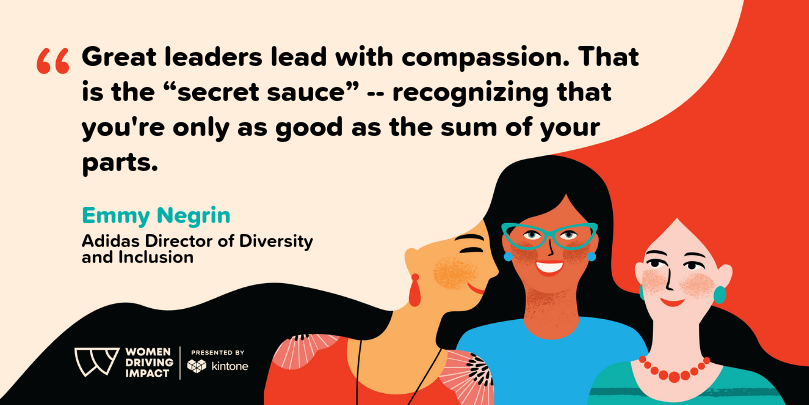
What are you doing to encourage diversity at Adidas?
We focus on three things: education and awareness, talent development and growth, and recruitment practices.
We start with a common language, for instance: “Inclusion in the Workplace” training. It's mandatory for all leaders. We're rolling that out and providing toolkits for leaders to take back to their teams and say, “This is how I'd like to shift how we work together.”
Talent development and growth is around questioning: are we really looking at diversity and inclusion through every development program that we have? We're trying to address it by setting some parameters of what the qualities of a good leader are and looking through the lens of what an inclusive leader does to make a culture of belonging.
Then when they're thinking about growing their team, making sure that they understand what diversity means for them. It could mean more of a gender balance, or maybe they need balance in terms of race and ethnicity or LGBTQ representation. We use data deliberately, to make better decisions and help us look at how we're growing talent within the organization.
Last but not least: recruiting practices. We know that our current employee base doesn't very well represent the consumer base and the world that we are trying to serve. So we are doing work on our outreach strategies, upskilling and training our recruiters and hiring managers, and focusing on what unconscious bias means in the hiring process.
Adidas is actually very diverse, but not as much on the corporate side as in the retail space. So one of the programs that we've built is called Adidas Unlimited, and it’s an opportunity for retail employees to get opportunities to work on the corporate side. We look at this as a new standard of eliminating barriers to entry.
Listen to our previous episode featuring Dr. Carol Langlois on How to Create an Inclusive Work Culture for Empowering Diverse Leadership.
About the Author
Nicole is Director of Marketing at Kintone, with 10+ years experience in content strategy, campaign management, lead acquisition and building positive work cultures of empowered, purpose-driven team members. She spent seven years as a journalist, previously serving as a CBS San Francisco digital producer, NPR contributor, Patagon Journal deputy editor and reporter for several publications, including the Chicago Tribune. She's passionate about the tech for good space, social entrepreneurship and women leadership. On the weekends, you’ll likely find her putting her Master Gardener skills to use in at community gardens in Oakland.







